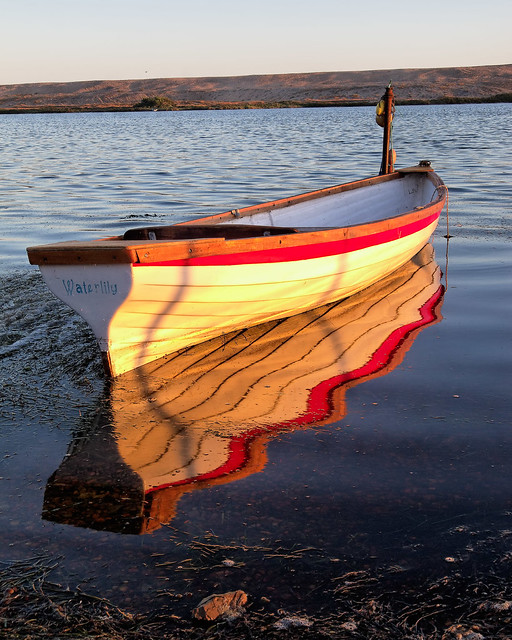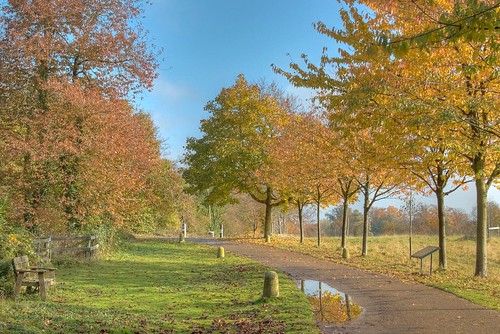I have been fretting recently about sharpening, particularly of images being shown on the web, in blogs such as this one. Common wisdom has it that sharpening should be the last thing done to an image, but when images are being hosted by third-party photo services, it can be difficult to control exactly how sharpening is applied. More...
I like gadgets, and here’s a new one. I’m not expecting it to replace my DSLR, but it has a couple of big advantages over it – it weighs practically nothing and fits in a shirt pocket.
My former Canon point and shoot, an IXUS 800 IS (called the SD 700 in the USA) has now pretty much given up the ghost: the accumulation of pocket lint and grit in the mechanics of the lens extension mean it frequently stops working with a “lens error”, and after dropping it and cracking open the casing, a liberal wrapping of duct tape has been necessary to stop light leaks. It was the fragility of a mechanical lens extension which made me swear I’d never buy another camera like it, and yet Canon have tempted me with this model, which – crucially – has a sensible blend of sensor size, pixel density (it's a 10 megapixel camera) and lens speed which means it will produce very nice shots in good light, and still be able to perform reasonably in less bright conditions.
I’ll try hard not to drop this one (in general, I seem to experience one drop per year), as it seems unlikely it would fare well. It’s very small – which is okay as I have small hands and am used to holding point-and-shoot cameras in a dinky way after experiencing the IXUS 800 – and the buttons feel rather cheap and cheerful, especially the very free-spinning rear dial (though curiously, the function dial on the top of the camera is quite meaty).
One of the most interesting features of this P&S is its (official) ability to shoot RAW, thus allowing one to sidestep the over-zealous noise reduction that often characterises this type of camera. My favourite RAW converter, DxO Optics Pro, has built in support for the S90 and so I’m up and running with my favourite conversion presets straight away. Interestingly the RAW images exhibit a huge amount of lens distortion – at the wide end it’s a bit like looking through a goldfish bowl – and this is corrected in camera (as it is by DxO Optics Pro) using software … so this camera is very much a fusion of hardware and software in what it produces … but then, thinking about it I suppose that’s true, to some degree, for all digital cameras.
 Boat on the Fleet Lagoon (taken with Canon S90)
Boat on the Fleet Lagoon (taken with Canon S90)
This year's must-do geek photographer activity seems to be the production of HDR (High Dynamic Range) photos. Here is my first attempt ...
For any of you not familiar with the technique, the theory is that several images of the same scene, which are identical except for exposure, can be cleverly combined by computer to produce a high dynamic range image. Because one image will have exposed highlights correctly, and one shadows, it is possible to have all parts of the image exposed correctly even in a high-contrast scene, such as one containing bright sky and shadows.
So much for the theory. In practical terms what you probably need (or at least what I have used is):
- A camera that does automatic bracketing with sufficient exposure differential (my Nikon D50 will take a three-image bracketed set at -2, 0 and +2 stops)
- A heavy tripod - each scene must be the same so the camera needs to be held firmly in place
- A remote shutter release - optional, but helps greatly to keep the camera un-moved
- Software - I've used Photomatix.
That's the basics, for an in-depth tutorial and a glimpse of what a master can do with HDR, check out Stuck in Customs.
So anyway, here is an autumn scene at Wandlebury, taken with the auto bracketing function. Note the rather bland "correctly exposed" image (centre), the too dark underexposed one to its left, and the more vivid over-exposed image on the right (with a blown-out white sky, actually it was blue).



All of these images were taken with a Nikon D50 and Nikkor 18-200 VR lens at 32mm and F11: only the exposure time varied. Before combination the images were corrected for lens abberations using DxO Optics Pro (processing from RAW). Here is the result of combining the three images using the "tone mapping" feature (and default settings) of Photomatix:

and a little further on down the path ...



yielding …

To me HDR images don't look much like photographs - they look much more like reality...